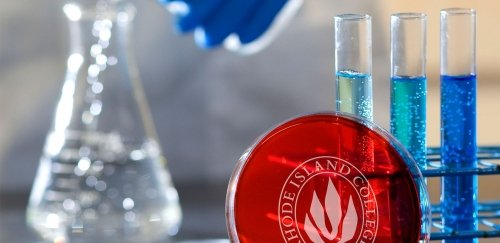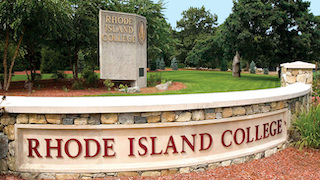No, we don’t mean the science experts – let Hollywood help you find the right program.
Faculty Researchers
Learn more about the research in which faculty are currently engaged.
Students in the Britt lab work on finding new antibiotic-producing bacteria, as part of the Small World Initiative. We isolate bacteria from soil samples, test colonies for the ability to inhibit growth of specific pathogens, then identify the soil bacteria using PCR and DNA sequencing. We also survey for antibiotic resistant organisms within the soil isolates. Interested undergraduate students are invited to apply for BIOL 491 or 492 independent study. Email dbritt@ric.edu.
The Hewins Lab focuses on ecosystem ecology and biogeochemistry and how drivers of carbon and nutrient cycling are affected by disturbances such as land use change, plant community change and climate change. Students in the Hewins Lab measure litter decomposition and extracellular enzyme activity along with environmental parameters to link disturbance to process at the ecosystem scale. Additionally, the Hewins Lab is interested in using empirical data to inform models that aim to predict future climate and its associate feedback on the rates of biogeochemical cycling. Email dhewins@ric.edu.
Research in the Maia Lab focuses on fish biomechanics. We use functional morphology to elucidate the evolution of locomotion mechanics and to understand how habitat changes can impact fishes. Our lab studies are complemented by field work to bridge the gap between biomechanics and ecology. We are also interested in the role of body shape, fins and other control surfaces during unsteady locomotion and possible application to bioinspired solutions. Some of the techniques used in my lab are respirometry, kinematics, particle image velocimetry and electromyography. Email aresendedamaia@ric.edu.
The Rand-Cyr Lab focuses on the evolution of molecular responses to chemical stress in aquatic vertebrates and the mechanisms of developmental toxicity of environmental pollutants through ligand-activated transcription factors. Email rrandcyr@ric.edu.
Marine invertebrate biology and ecology; echinoderm biomechanics and functional morphology; sea urchin early life history processes; sea urchin adhesive system. Email cnarvaezdiaz@ric.edu.
Whether it's the stripes of a tiger or the vibrant colors of poison dart frogs, pigment patterns are among the most striking and diverse animal traits. Using live-cell imaging and mutational analysis, the Patterson Lab seeks to identify genes and cellular behaviors required for stripe formation in larval zebrafish. Students with interests in cell biology, genetics or developmental biology are welcome to apply. Email lpatterson@ric.edu.
The Roberts Lab studies the cellular, molecular and evolutionary biology of plant cell walls and polysaccharide biosynthesis. In the moss Physcomitrella patens the lab has examined the formation of the plant cuticle, a thin waterproof wall covering that helps reduce desiccation in the aerial portions of plants, and the synthesis of cellulose, the major structural polysaccharide in plant cell walls. More recently, the Roberts Lab has been investigating the genes involved in cell wall synthesis in the marine green alga Derbesia tenuissima. The cell wall of this species contains a number of unusual structural polysaccharides that may help us to understand new aspects of wall biosynthesis. The lab also has an interest in microbial exopolysaccharide synthesis, such as the formation of mixed-linkage glucan in the Gram-positive bacterium Sarcina ventriculi. Email eroberts@ric.edu.
More than six million people suffer from a neurodegenerative disease (ND) for which there is no cure. The Stilwell Lab uses the powerful genetic model organism Drosophila melanogaster to study the consequences of mutations that cause various NDs, focusing on how mutations in the superoxide dismutase gene cause motor neuron cell death as a model of Amyotrophic Lateral Sclerosis (ALS). Mutations in superoxide dismutase were first discovered in the early 1990s, and we still do not understand how changes in this one gene can cause only certain cells to degenerate. The Stilwell Lab uses genetic engineering to create fly models, which replicate many features of the human disease, and uses genetic screening approaches to identify the molecular pathways leading to motor neuron death. Email gstilwell@ric.edu.
The Toorie Lab focuses on identifying neural and endocrine mechanisms that are disrupted under conditions of metabolic stress induced by exposure to obesogenic diets or substances of abuse. This lab examines the reward and homeostatic centers in the rodent brain to identify unique molecular targets associated with the development or progression of metabolic syndrome and substance abuse liability. Email atoorie@ric.edu.


